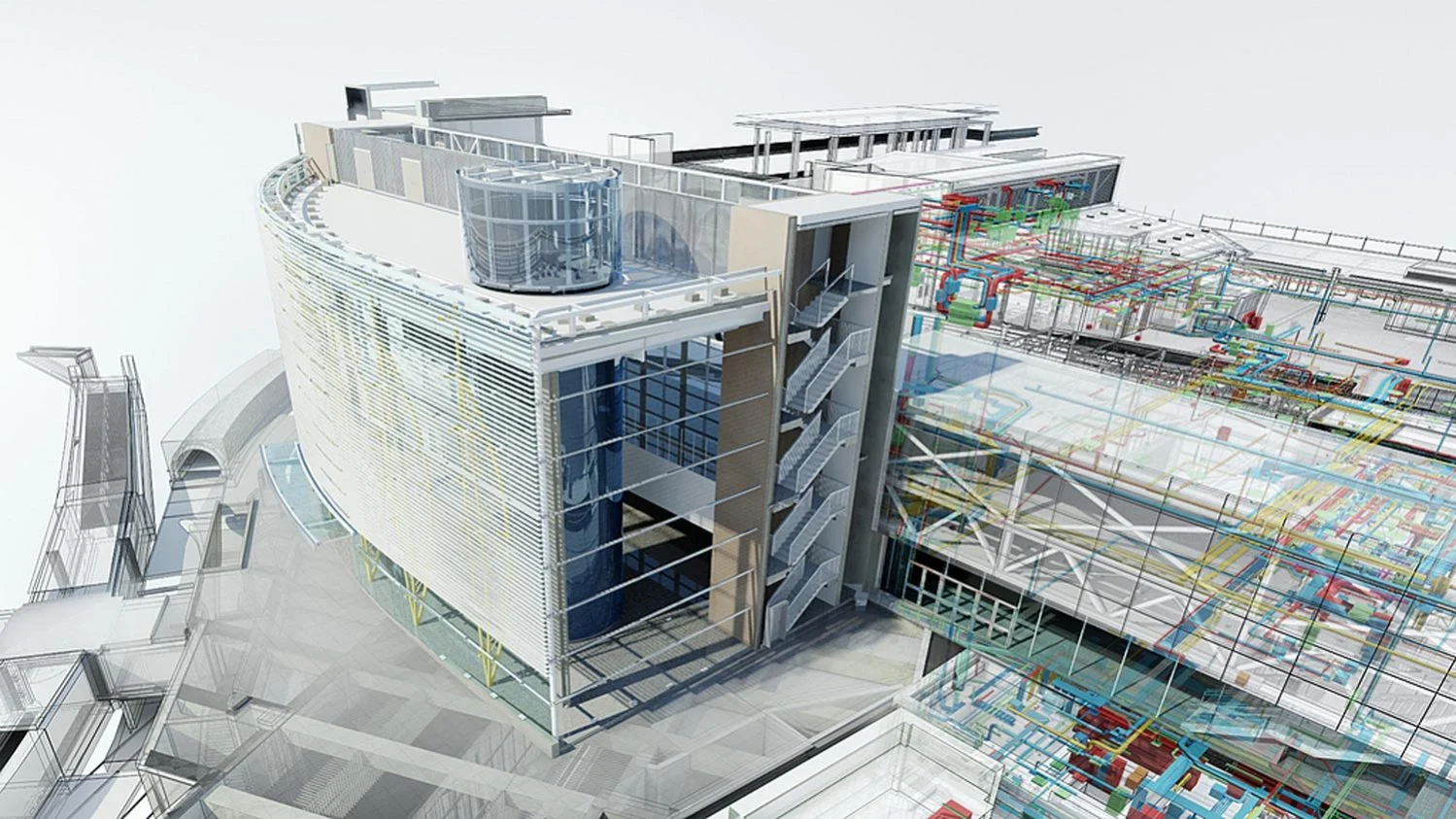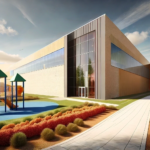Building Information Modeling (BIM) is a game-changing technology that has redefined the construction industry. By integrating advanced digital tools with project management service capabilities, BIM improves construction processes, enhances collaboration, and minimizes risks. Let’s discuss the details of how BIM transforms construction projects and elevates project management efficiency.
What is Building Information Modeling (BIM)?
Building Information Modeling (BIM) refers to a complex digital technique that creates an intelligent digital model of the physical and organizational characteristics of an asset. It is also an intelligent 3D model-based system that unifies data from different disciplines and becomes a communication center for project participants in construction.
This is because stakeholders in a construction project such as architects, engineers, contractors, and clients can utilize BIM to understand, analyze and manipulate data about the project from the design phase to construction phase, and even during the facility management phase.
More Than 3D Modeling
In its simplest terms, BIM is not only 3D modeling but it is an effective means of designing, constructing and managing buildings. While being based on geometric data, BIM models contain working specifications about materials, stiffness, energy characteristics, and life span. These models are complemented with data attributes and, optionally, parametric rules that control and guarantee design consistency while facilitating decision-making.
It is a system of drafting and designing a single source database in which every aspect of the project is linked. For example, if the size or position of a window changes in the design, BIM also alerts the changes to the walls, floors, energy analysis and many other related objects to the change and eliminated any likelihood of error.
The Level of Detail (LOD) Framework
BIM also allows for a level of detail (LOD) which outlines the creation of the model throughout the progress of the project. Laying out from initial concepts of the design (LOD 100) through to a detailed construction model (LOD 400) and as-built records (LOD 500), BIM is flexible to the dynamics of the project.
For that same purpose, BIM is not only limited to 3D view but also comes in 4D view, which is time, 5D view focusing on cost and 6D view on sustainability. This will facilitate scheduling, cost control and sustainability assessment at a more refined level than some of the existing project management tools which tend to operate in a relative isolation of one another.
BIM is an electronic model of architectural and engineering designs of a facility with information on the physical and functional aspects of the building. It gives a central repository for data unique to a project, which can be accessed by everyone who is involved in a project from architects to engineers and contractors to finally the clients.
There are several key features that must be embraced in a construction project as an essential requirement of BIM.
Key Features of BIM in Construction Projects
- 3D Modeling for Precision
BIM allows for the creation of highly detailed 3D models that represent the exact geometry of a building. These models include every aspect, from structural details to interior design, offering a comprehensive visual guide. - Centralized Data Repository
That is why BIM is the central platform where all project information, designs, schedules, estimates, and material requirements are kept and continually synchronized. This makes certain that everybody is informed at any one point in time. - Integration with Project Management Service
BIM integrates seamlessly with modern project management service tools, enhancing workflow efficiency, tracking project timelines, and ensuring budget adherence. - Lifecycle Management
BIM extends beyond the design and construction phases, supporting facility management and maintenance throughout the building’s lifecycle.
Advantages of BIM in Construction
1. Enhanced Collaboration
The management of construction projects requires the integration of parties such as architect, engineer, contractor, and clients most of the time. BIM is a process of developing a digital platform in which all the project participants can collaborate with each other and with updates at their fingertips.
Contrary to traditional systems or infrequent and incomplete meetings between project team members, BIM provides all interested parties with accurate and updated information in real time, and this includes designs, schedules, and other relevant information.
It reduces misunderstandings, eradicates duplicity, and makes sure that all the staff members are on the same page in order not to cause a delay due to lack of information.
2. Improved Project Efficiency
Construction efficiency can therefore be defined as the ability to complete construction within certain specified time requirements, or more preferably within the set construction budget and with minimal wastage of the resources used. The BIM function smoothly fits into project management services such that the common procedures like scheduling, resource control, and cost estimating can be achieved.
One of BIM’s standout features is its ability to detect clashes (e.g., overlapping pipelines or structural conflicts) before construction begins. Repetitive tasks, like quantity takeoffs or material estimation, are automated, reducing manual errors.
These capabilities significantly decrease the chances of rework, saving time and ensuring a smooth workflow.
3. Cost and Time Savings
It is important to note that BIM plays an important role of improving the financial and temporal control of construction projects through planning and forecasting. The BIM provides the precise material quantity that is needed eliminating the problems of over purchasing or what is worse, overstocking.
Anxiety and risk indicators help to prevent mistakes before they occur, and improve time, work, and money control.Projects are done in a shorter period of time and with less expenses, bringing increased satisfaction for the clients and better profits for the companies.
4. Risk Mitigation
Construction projects are rife with risks be it design flaws, regulatory issues, or on-site hazards. BIM addresses these risks proactively by identifying potential issues during the design phase.
For example, BIM can flag a situation where plumbing might interfere with electrical systems, enabling corrections before construction starts. BIM’s detailed documentation ensures all aspects of the project meet local building codes and safety regulations.
This reduces the likelihood of costly legal disputes, work stoppages, and safety incidents.
5. Sustainability and Energy Efficiency
With increasing emphasis on green construction, BIM plays a pivotal role in designing sustainable buildings.BIM includes features to simulate energy performance, helping designers optimize heating, cooling, and lighting systems for efficiency.
BIM promotes the use of sustainable materials by providing insights into lifecycle impacts.These eco-friendly designs not only benefit the environment but also reduce operational costs for building owners in the long run.
Applications of BIM in Modern Construction
- Design Visualization
BIM provides clients with realistic renderings of their projects, helping them make informed decisions. - Clash Detection
BIM software identifies clashes between architectural, structural, and MEP (mechanical, electrical, and plumbing) elements before construction begins. - Simulation and Analysis
BIM allows for simulations of construction sequences, energy performance, and even disaster resilience, ensuring optimal design and functionality. - Facilities Management
Post-construction, BIM supports building maintenance by offering a digital twin of the facility for ongoing management.
BIM and Project Management Service: A Perfect Partnership
The integration of Building Information Modeling (BIM) with project management services has fundamentally transformed how construction projects are planned and executed. Together, they create a cohesive system that enhances efficiency, communication, and project outcomes.
One of the key benefits of this partnership is enhanced scheduling. BIM’s detailed and accurate models provide precise data that feeds into project management tools, resulting in more reliable and realistic schedules. This ensures that projects stay on track and meet deadlines.
Additionally, project management services use BIM data to optimize resource allocation. By analyzing the comprehensive data BIM offers, managers can effectively distribute labor, equipment, and materials, avoiding bottlenecks that could disrupt progress. Real-time monitoring is another significant advantage.
BIM continuously updates project details, giving managers the ability to address issues promptly and keep the project moving smoothly. This feature also ensures better coordination between on-site teams and off-site stakeholders.
Finally, the integration of BIM with project management platforms enhances client transparency. Clients gain valuable insights into project timelines, budgets, and milestones, fostering trust and satisfaction. This collaboration between BIM and project management services streamlines workflows and delivers higher-quality construction projects that align with client expectations and industry standards.
Challenges of Implementing BIM
- Initial Costs
Implementing BIM requires investment in software, training, and hardware. However, the long-term benefits outweigh these initial expenses. - Learning Curve
Teams may face a steep learning curve when adopting BIM. Comprehensive training is essential for maximizing its potential. - Interoperability Issues
Compatibility between different BIM software solutions can pose challenges. Selecting standardized tools is key to overcoming this hurdle.
Future of BIM in Construction
BIM is evolving rapidly, incorporating technologies such as artificial intelligence, augmented reality, and cloud computing. These advancements promise even greater precision, collaboration, and innovation in construction projects.
Conclusion
Building Information Modeling (BIM) is revolutionizing the construction industry by integrating cutting-edge technology with project management services. Its ability to enhance collaboration, improve efficiency, and mitigate risks makes it indispensable for modern construction projects. By embracing BIM, construction companies can deliver projects on time, within budget, and to the highest standards of quality.
Whether you’re an architect, engineer, or project manager, leveraging BIM can significantly boost your project’s success and ensure long-term sustainability.






